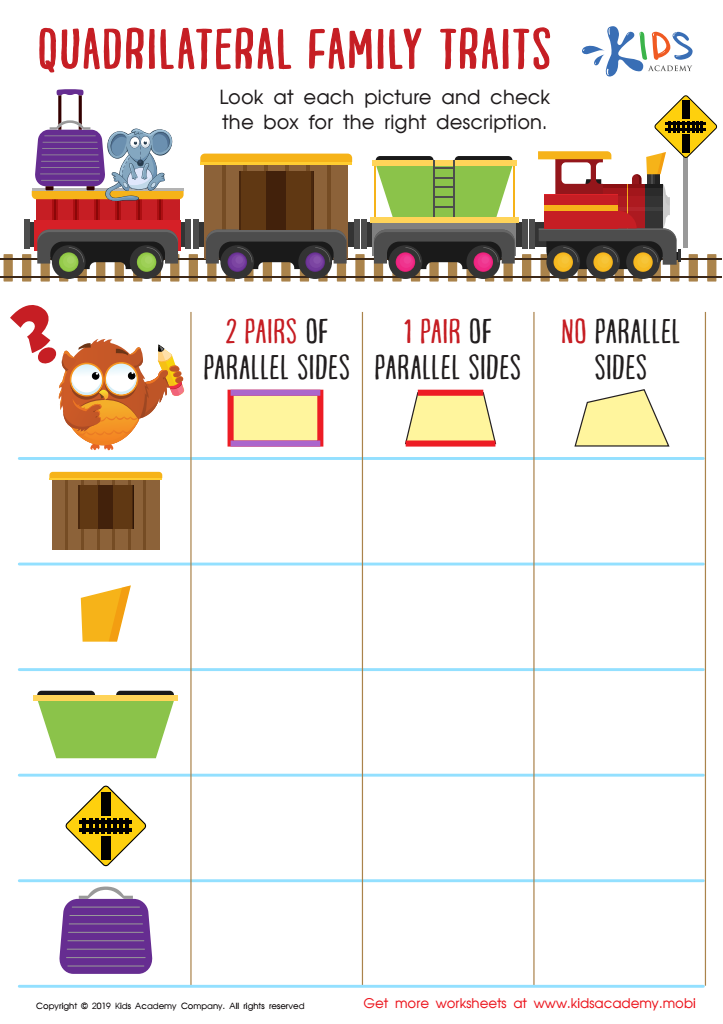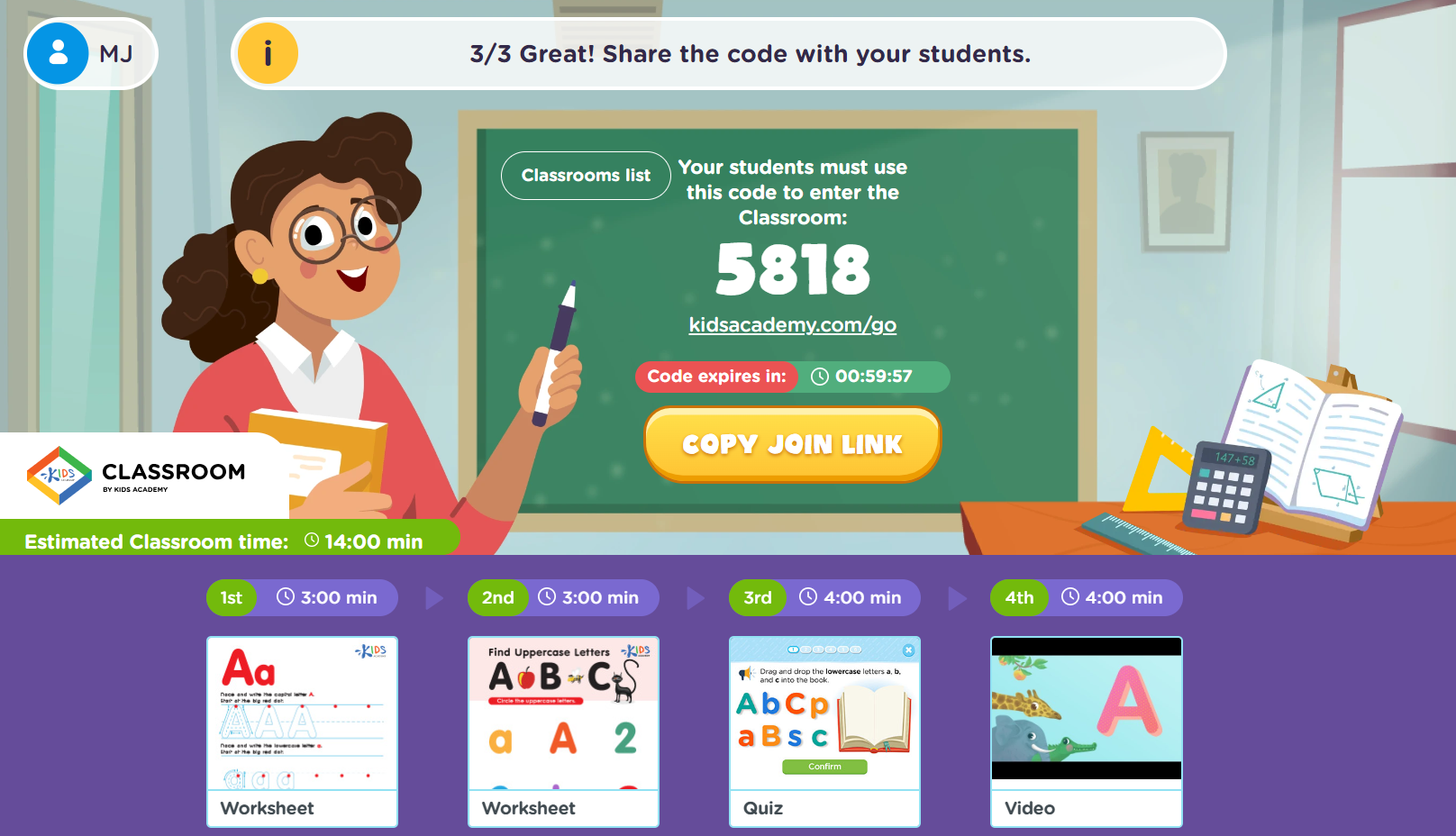Visual geometric learning Worksheets for Kids
1 filtered results
-
From - To


Quadrilateral Family Traits Worksheet
Question/Answer
What does the Visual geometric learning skill mean when it comes to Grade 3 Geometry learning?
Visual geometric learning skill in Grade 3 Geometry refers to the ability of students to understand and interpret geometric concepts through visual representations. It involves recognizing, comparing, and manipulating shapes, understanding spatial relationships, and visualizing transformations such as flips, turns, and slides. This skill is crucial for developing a strong foundation in geometry by enhancing spatial reasoning and problem-solving abilities.
How to test a Grade 3 student’s Visual geometric learning skills?
To test a Grade 3 student's visual geometric learning skills, use a variety of tasks including identifying shapes, distinguishing between different types of angles, solving simple puzzles that require spatial reasoning, recognizing patterns, and understanding symmetry.
What are some effective activities to train students’ Visual geometric learning skill when teaching them about Geometry?
Effective activities for training students' visual geometric learning skills include using manipulatives like tangrams and geoboards, engaging in drawing and constructing geometric shapes, incorporating dynamic geometry software (e.g., GeoGebra), solving visual puzzles and pattern recognition exercises, exploring symmetry through art and nature, and employing interactive 3D models to understand complex geometric concepts.
 Assign to the classroom
Assign to the classroom












